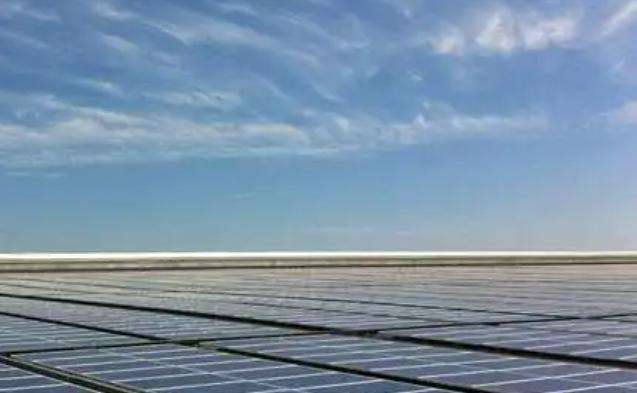Solar panels can convert thermal energy directly into electricity.
Solar power generation methods There are two solar power generation methods: one is the light-heat-electricity conversion method and the other is the light-direct conversion method. electricity.
(1) The light-heat-electricity conversion method uses thermal energy generated by solar radiation to produce electricity. Generally, a solar collector converts the absorbed thermal energy into steam as the working fluid and then drives it away. a steam turbine to produce electricity. The first process is a process of converting light into heat; the second process is a process of converting heat into electricity.
(2) The direct light-to-electricity conversion method uses the photoelectric effect to directly convert solar radiation energy into electrical energy.electric. The basic device for converting light into electricity is the solar cell.
According to currently known technology, only photovoltaic solar panels can directly convert the sun's radiant heat into electrical energy. Thermoelectric conversion materials directly convert thermal energy into electrical energy. It is a completely solid energy conversion method that does not require chemical reactions or fluids.
Therefore, there is no noise, no wear, no fluid leakage and no volume during the power generation process. With the advantages of small size, light weight, easy movement and long service life, it occupies an "irreplaceable" position in special application fields such as military batteries and l long-range space. sensors, long-distance communications and navigation, and microelectronics.
Detailed information:
Composition of the solar panel and functions of each part:
(1) Tempered glass: Its function is to protect the main power generation body (such as battery cells). There are requirements for its light transmission selection:
(2) EVA: Used for bonding and fixing tempered glass and transparent EVA material quality for the main body of power generation (battery chip) directly affects the life of the component EVA exposed to air is prone to aging and yellowing, which affects the life of the component. light transmission of the component, thereby affecting the power generation quality of the component. In addition to the quality of the EVA itself. In addition, the lamination process of module manufacturers also has a great impact, for example, if the bonding degree of the EVA is not. compliant with standardss, and the bonding strength between EVA and tempered glass and backplane is insufficient, it will cause premature aging of EVA and affect the service life of the module.
(3) Cells: The main function is to produce electricity. The main market for power generation is crystalline silicon solar cells and thin-film solar cells, both of which have their own advantages and disadvantages.
Crystalline silicon solar cells have relatively low equipment costs, but high consumption and cell costs. However, the photoelectric conversion efficiency is also high, and they are more suitable for generating electricity under outdoor sunlight.
Thin film solar cells have relatively high equipment costs, but the consumption and battery costs are very low, but the photo conversion efficiencytoelectric is more than half that of crystalline silicon cells, but the low light effect is very good, under ordinary light. Can also produce electricity, like solar cells in a calculator.
(4) Back plate: Function, sealing, insulation and waterproofing. Typically, TPT, TPE and other materials are used and must resist aging. Most component manufacturers offer a 25-year warranty. Tempered glass and aluminum alloys are generally no problem. If the panel and silicone can meet the requirements.
(5) Aluminum alloy: protects rolled parts and plays a certain sealing and supporting role.
(6) Junction box: Protects the entire power generation system and acts as a power transfer station. If a component is shorted, the junction box will automatically disconnect the string frombattery short-circuited to avoid burning. of the entire system. The most critical thing in the junction box is the selection of diodes depends on the type of cells in the module, and the corresponding diodes are also different.
(7) Silica gel: sealing function, used to seal the junction between components and aluminum alloy frames, components and junction boxes. Some companies use double-sided tape and foam to replace silica gel. commonly used in China. The process Simple, practical, easy to use and inexpensive.
Baidu Encyclopedia-Solar Panels














